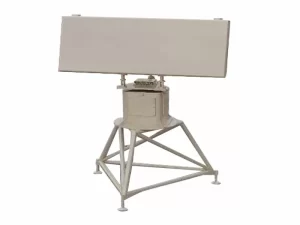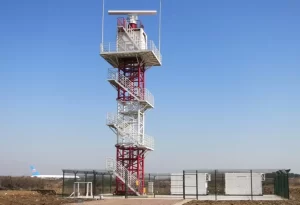Air travel has become an essential part of our lives, connecting people and businesses across the globe. However, with the increasing number of flights, the safety of airports has become a major concern. The risk of accidents and collisions on the ground is a significant threat to airport safety. To address this issue, airports are turning to advanced technologies such as Surface Movement Radar (SMR) to improve safety and reduce the risk of accidents.
What is Surface Movement Radar?
Surface Movement Radar is a technology that uses radio waves to detect and track the movement of aircraft, vehicles, and personnel on the ground. It provides real-time information on the location, speed, and direction of objects on the ground, enabling air traffic controllers to manage ground movements more efficiently and safely.

How does Surface Movement Radar work?
Surface Movement Radar works by emitting radio waves that bounce off objects on the ground and return to the radar antenna. The radar system then analyzes the reflected signals to determine the location, speed, and direction of the objects. The information is displayed on a screen in the air traffic control tower, allowing controllers to monitor ground movements and make informed decisions about aircraft and vehicle movements.
Benefits of Surface Movement Radar
Improved Safety
One of the primary benefits of Surface Movement Radar is improved safety. By providing real-time information on ground movements, air traffic controllers can manage ground movements more efficiently and safely. They can identify potential conflicts and take proactive measures to prevent accidents and collisions.
Reduced Delays
Surface Movement Radar can also help reduce delays by improving the efficiency of ground movements. By providing accurate information on the location and speed of aircraft and vehicles, controllers can optimize ground movements and reduce the time aircraft spend on the ground.
Enhanced Capacity
Surface Movement Radar can also enhance airport capacity by enabling more efficient use of runways and taxiways. By providing real-time information on ground movements, controllers can optimize the use of available space and reduce the time aircraft spend on the ground.
Improved Situational Awareness
Surface Movement Radar can also improve situational awareness for air traffic controllers. By providing real-time information on ground movements, controllers can make informed decisions about aircraft and vehicle movements, reducing the risk of accidents and collisions.

In conclusion, Surface Movement Radar is a critical technology for improving airport safety and reducing the risk of accidents and collisions on the ground. It provides real-time information on ground movements, enabling air traffic controllers to manage ground movements more efficiently and safely. With the increasing number of flights, the adoption of Surface Movement Radar is becoming more critical for airports to ensure the safety of passengers and crew. To learn more about Surface Movement Radar and how it can improve airport safety, visit our company website at mskyeye.com.

